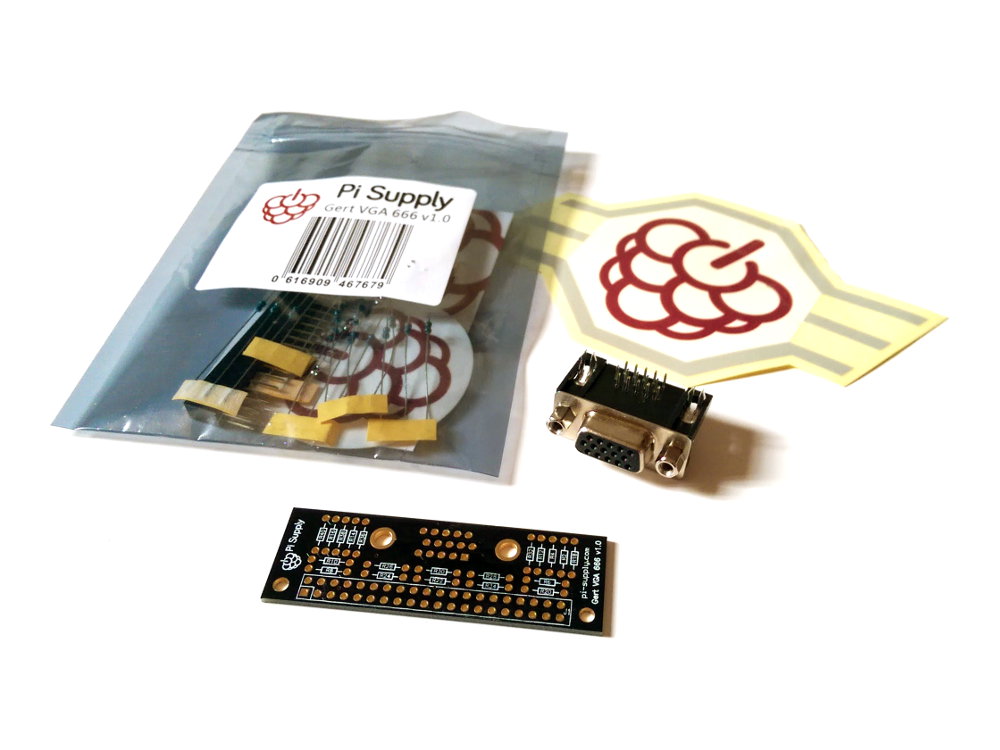One of the questions asked since the beginning of time is ‘why didn’t the Raspberry Pi have a VGA output?’. There were various reasons a few being board space and cost. The Broadcom chip at the heart of the Pi does have the ability to generate a VGA output but it wasn’t possible to implement on a Model A or Model B due to the GPIO header configuration.
With the release of the Model B+ and A+ it is now possible to take advantage of this feature.
 The 40 pin header provides all the GPIO signals that the Broadcom SoC requires to construct the VGA signals. It needs to use a lot of them (all but six) but requires very little hardware to implement. The adapter consists of a PCB, a 40 pin header, a VGA connector and 20 resistors.
The 40 pin header provides all the GPIO signals that the Broadcom SoC requires to construct the VGA signals. It needs to use a lot of them (all but six) but requires very little hardware to implement. The adapter consists of a PCB, a 40 pin header, a VGA connector and 20 resistors.
I first saw this demonstrated at a Cambridge Jam where Gert van Loo had a VGA monitor attached to a Pi via a small add-on board. The board was referred to as the “Gert VGA 666”, the 666 being a reference to it providing 6 bits per colour channel.
Gert explained he was releasing the design as open source hardware so the cost could be kept to a minimum by those people who would go on to make and sell batches of them. All the design files are available on the VGA 666 GitHub page.
The first team to take up the challenge was “Pi Supply” who ran a successful Kickstarter campaign. I backed the campaign and here is the kit I received for six of my Earth pounds :

Here is the device soldered up attached to a Model B+ :
The good :
- Gives you the ability to use VGA
- Resolutions up to 1080p @ 60fps
- Cheap
- Simple
The bad :
- Doesn’t work on a Model A or Model B
- Only leaves 6 GPIO pins free
- Not as good as HDMI
The amazing :
- Possibility of working alongside HDMI so you can use dual screens!
Yes dual screens from a Pi. For £6.
Assembly and Configuration
All the technical details as well as installation instructions can be found in the VGA 666 User Manual.
The “Using a cheap “Gert VGA 666” VGA adapter – [HOWTO]” forum post explains the software configuration required including adjusting the resolution to match your monitor.
This video by Alex Eames shows a side-by-side comparison between the HDMI and VGA output from a Pi using this device :
It won’t suit everyone but for those of you that want a cheap way to use an old monitor it’s almost perfect. The device is available from Pi Supply.







